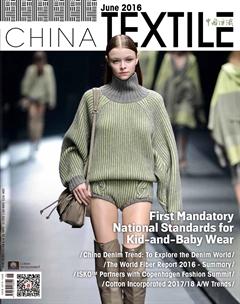Dear readers
International Trade Administration (ITA) of the U.S. Department of Commerce has just recently brought to the public “the 2016 Technical Textiles Top Markets Report”, providing historical data from 2008 through 2015 plus trends and forecasts demand for 2016 and 2017 that will witness 4% increase annually from $8.6 billion in 2015 to $9.3 billion in 2017 in the global demand for U.S. technical textile products in this 59-page edition.
I have not been able to peruse the whole report page by page, but a few paragraphs that I browsed were enough to convince me that the bilateral cooperation in technical textiles between China and the United States looms large, unrolling an optimistic prospect as both countries have a fitting complemetarity in the course of economic growth. China, though a strong rival of the global competitive landscape, ranks the fourth largest market for U.S. export of textiles and apparel in 2015, representing 4.4 percent of total exports. In the technical textile sector, China is the third largest market for U.S. technical textiles export, with Mexico and Canada as the overwhelming leaders that account for 55 percent in total trade, and more significantly, Chinas growing investment in infrastructure construction and aerospace and health-care industries drive technical textiles demand, an impressive part of which can be satisfied by importing more value-added and high-end products from the United States manufacturers who are in good position to meet these needs since the construction of roads, railways, hydroelectric dams, airports and harbors requires large amounts of technical textiles beyond the ability of Chinese technical textiles in many sub-sectors like geo-textiles, medical textiles, protective apparel, specialty & industrial fabrics, and nonwovens as well.
In 2015, Chinas technical textiles industry ramped up 6.51 percent in business revenues and 14.44 percent in profit, showing a fairly good performance better than the whole textile industry that registered 5.02 percent in revenue growth in the same period of time. In geo-textiles, the orders increased dramatically in the second half of last year, thanks to the large numbers of railways and water conservancy projects that started to be under construction as planned.
Regardless of what is concluded as executive summary in the report, China is still shortlisted in the top 30 as the nine standouts ITA identified for in-depth case studies, a demo of the role that China is playing and will play in the international trade scenario for U.S. technical textiles export, even though the Trans-Pacific Partnership (TPP) agreement in which the United States plays a dominant role on this 12-country theater stage has not labeled China in membership status. A drama, good or not, depends largely on the number of audiences and viewers who will pay to receive and accept, manufacturers who produce the drama of the technical textiles, strongly wish to present their productions on an open world-wide amphitheater stage with maximum number of participants who take the front seats for more pays rather than inside an enclosed ballroom with only 12 dancers against what sounds like an encouragingly nice music. A fair play is a good play that is performed on an open market basis with the tickets priced on a fair level.

